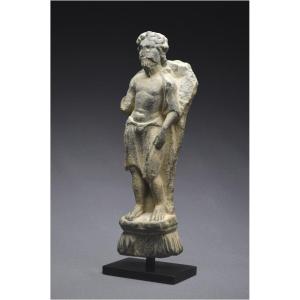Pakistan / Region of Gandhara
2nd – 4th century AD.
Representation of Vajrapani shown standing slightly swaying, the athletic body like a Hercules, the bare chest, the waist surrounded by a cloth. It rests barefoot on an ovoid base surmounting a row of lotus petals. The left arm detached from the body hand resting on the thigh, the right arm originally holding a vajra. The head with the long beard and the undulating hair, a long lock falling on the left shoulder.
At the crossroads of the civilizations of Iran, the Greek world, India and nomadic civilizations, Gandhara constituted for sixteen centuries an almost obligatory route of passage for the caravans which linked the West to China. A Hellenistic background maintained by the trade in luxury products exported from the Mediterranean basin, mixes with Parthian and Indian influences to the benefit of a Buddhist iconography with great sensitivity.
Gray schist
27.2 x 8.8 cm included stand
Visible losses
Former French private collection








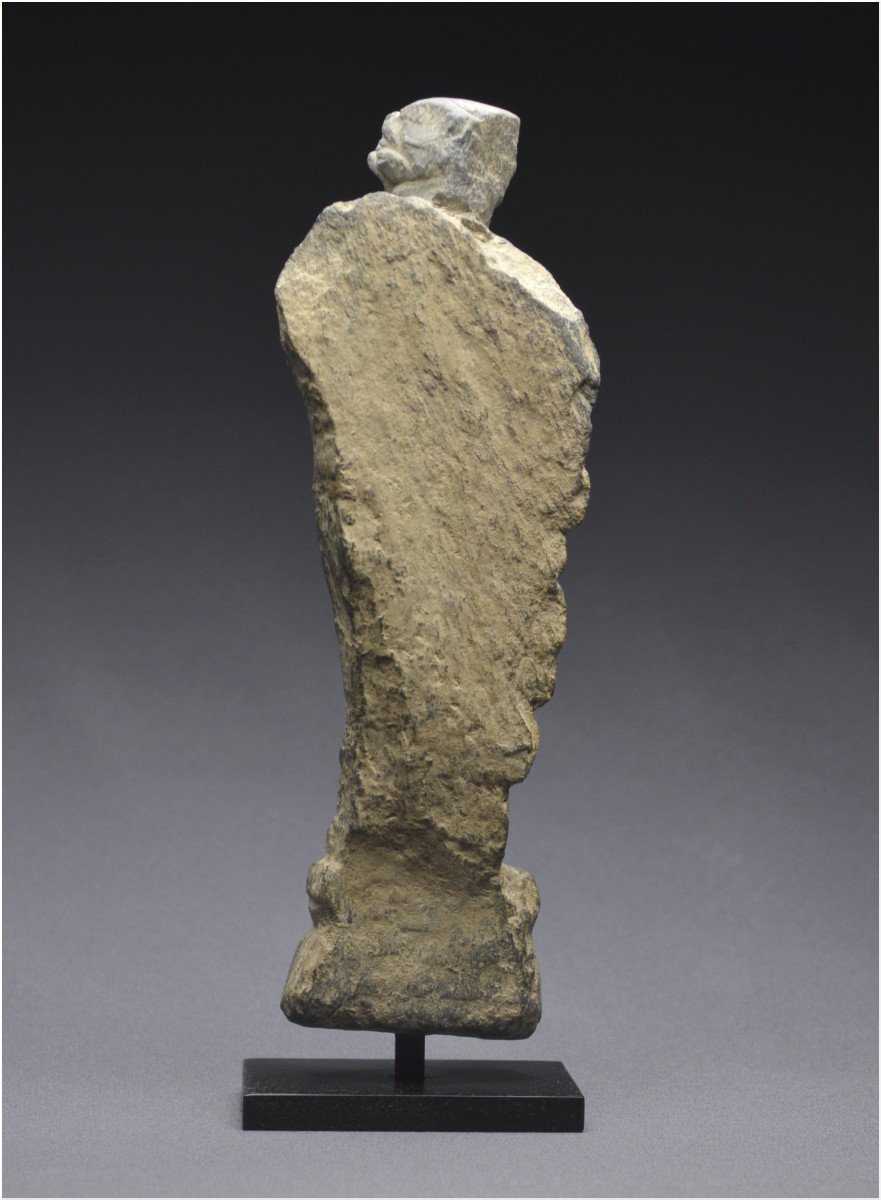

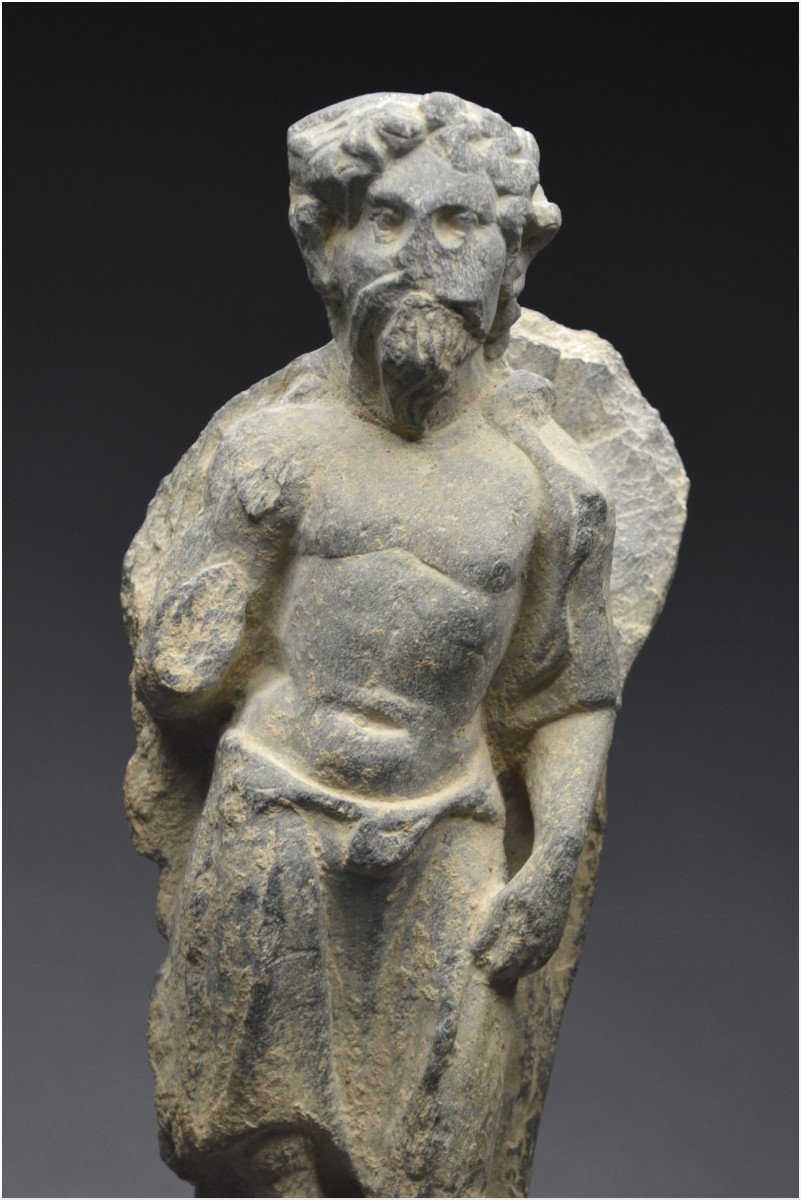
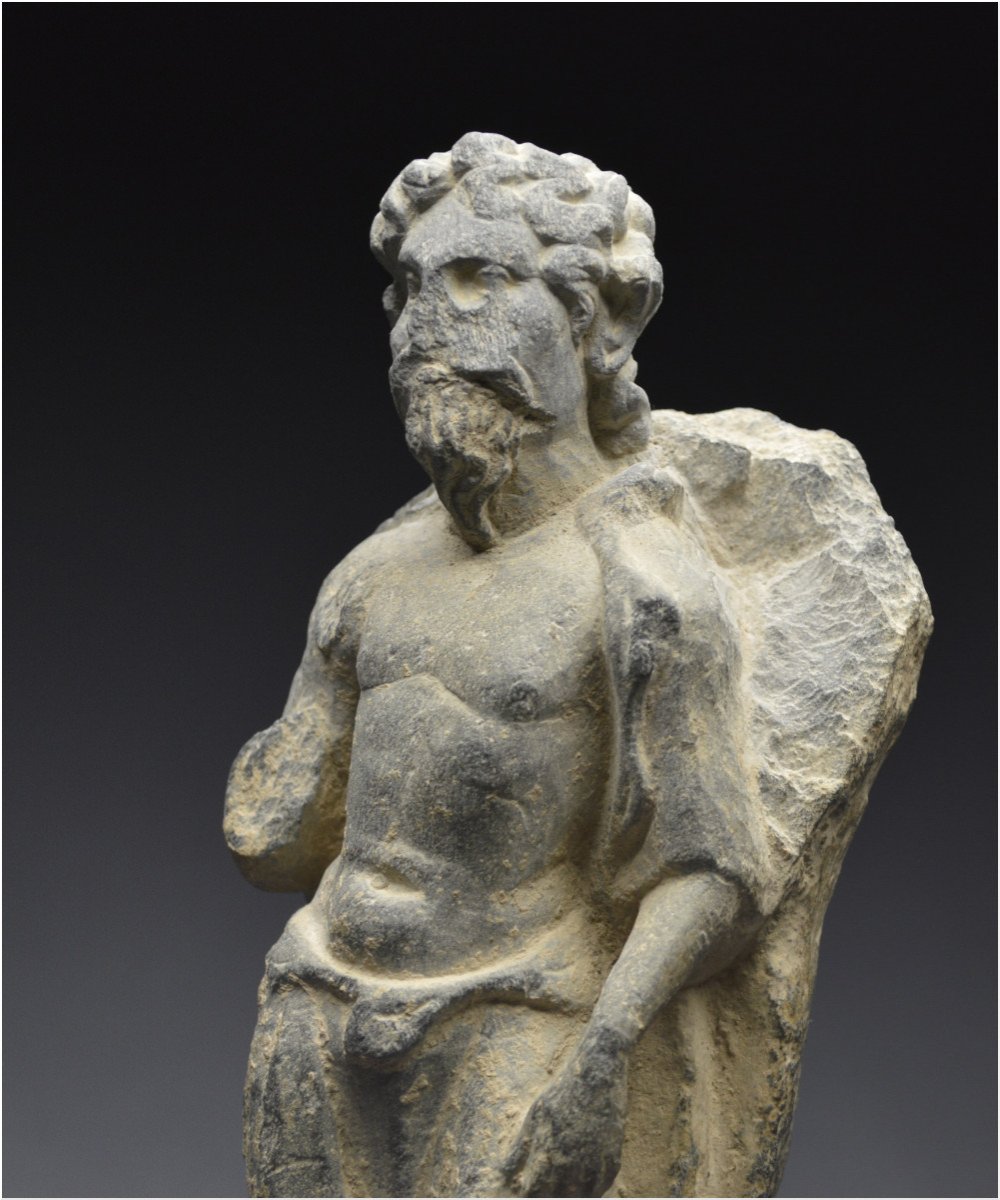

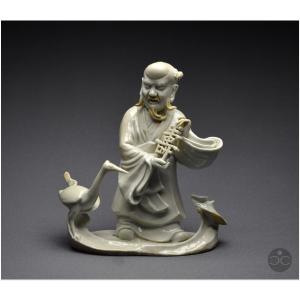


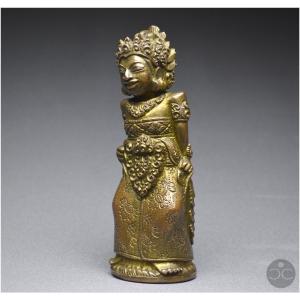
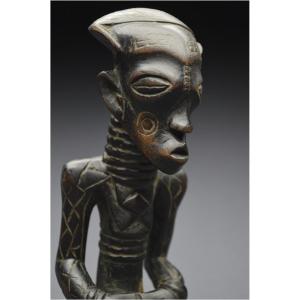





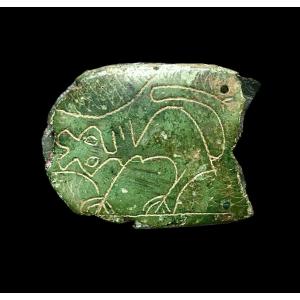



 Le Magazine de PROANTIC
Le Magazine de PROANTIC TRÉSORS Magazine
TRÉSORS Magazine Rivista Artiquariato
Rivista Artiquariato
